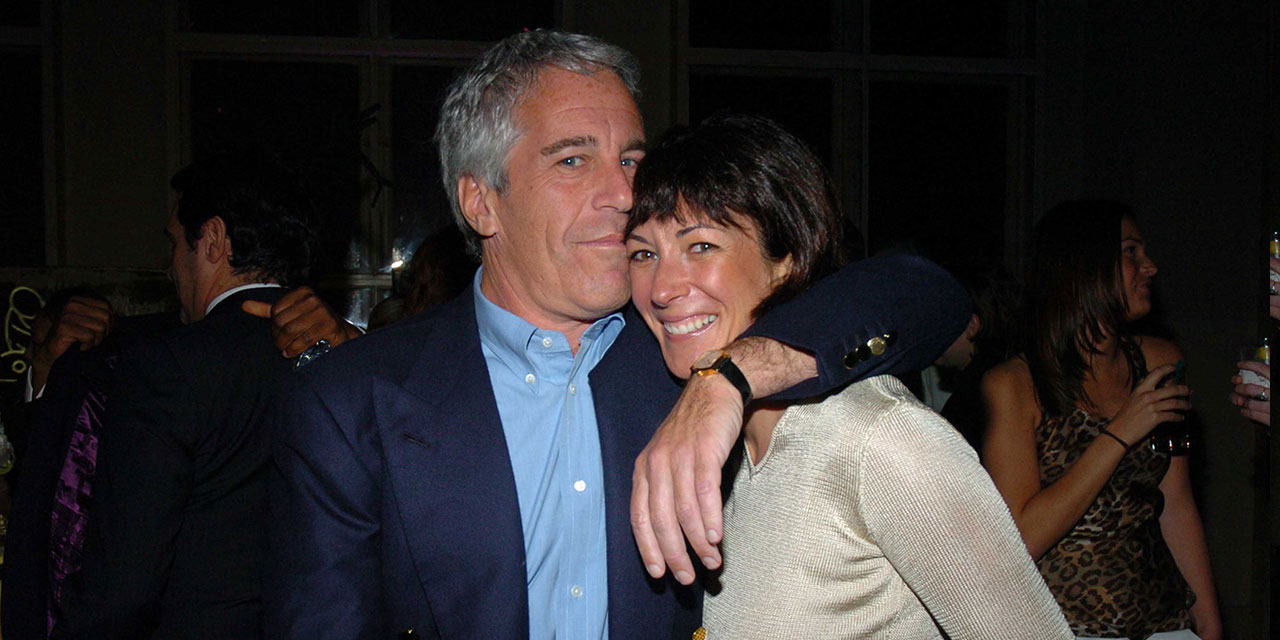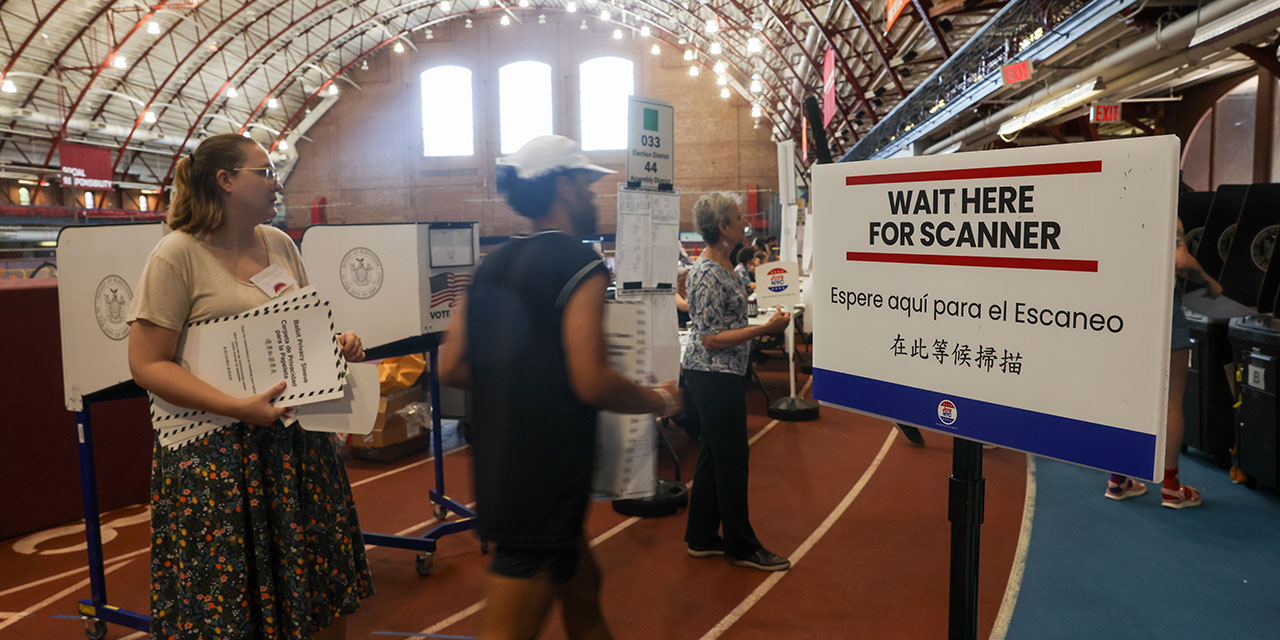When New Yorkers travel around the country, we are frequently asked to explain what New York City is all about. In answering this question, one is tempted to resort to superlatives: New York is the biggest city in the United States, its cultural scene the most diverse, its public transportation network the most vast, its skyline the most impressive. “How could you possibly understand?” a New Yorker might scoff at someone from Los Angeles or Chicago. “Your city has only three million people.”
But in order to truly grasp what drives New York life, one must understand “new” geography, in which distance is measured not in miles but in mentalities. I like to say that in terms of this new geography, New York City sits separated from Europe by the Atlantic River and from the rest of the United States by the Hudson Ocean. Despite the city’s problems, the “New York state of mind” makes it a place to which so many want to come—and which, in spirit, so many never leave, even when they take up residence thousands of miles away.
Finally, a reason to check your email.
Sign up for our free newsletter today.
To New Yorkers, of course, all this may seem commonplace. But the concept of the new geography is also useful in helping us understand the character of our own city.
Analysts often explain the differences that divide New Yorkers from one another in purely demographic terms. Andrew Hacker and Jim Sleeper, for example, have both written important books on how racial questions play out in the political and social life of the city. Robert F. Wagner Jr.’s Commission for the Year 2000 took the position that the most important dividing line was not between black and white, but between rich and poor.
All of these explanations have some meet. I believe, however, that the most critical distinction is one that is seldom discussed and that cuts across lines of both race and class, separating New Yorkers on the basis of their political and social culture. The distinction is between what are in fact two “boroughs,” Manhattan and outer borough New York. Both include people of all ethnic groups and various economic conditions.
Of course, my distinction does not precisely follow the physical boundaries of the five boroughs. Outer borough New Yorkers can be found in Manhattan and dominate some neighborhoods, such as the Lower East Side, Harlem, and Washington Heights. There are Manhattan types in the other boroughs as well, including large concentrations in such communities as Park Slope, Brooklyn; Jackson Heights, Queens; St. George, Staten Island; and Riverdale, the Bronx.
What sets the two New Yorks apart? Many things. Most Manhattanites live in buildings owned by someone else, while the single-family home is the norm for outer borough New Yorkers Manhattanites usually have professional jobs; men wear white shirts and ties and carry briefcases. Outer borough New Yorkers are likely to work with their hands and dress more casually. Some outer borough New Yorkers do work in those fancy midtown office buildings, but at night they can hardly wait to get home to Queens or Brooklyn.
Most New Yorkers have an intuitive grasp of the distinction I am describing, yet it somehow doesn’t make it into the authoritative literature. That is largely because Manhattanites, who write most of the books and articles on the subject, enjoy an elite status and prefer not to call explicit attention to it.
Borough Politics
The differences between Manhattanites and outer borough New Yorkers are often played out at the ballot box. In the 1992 Senate race, for example, Democratic challenger Robert Abrams won a huge majority in Manhattan, while Republican incumbent Alfonse D’Amato was quite competitive in the outer boroughs, despite their high Democratic enrollments. While most analysts acknowledged the substantial Jewish vote D’Amato received—about 40 percent statewide—they failed to note the split between outer borough Jews and Manhattan Jews.
An even more revealing example was provided by the 1992 race in the 14th Congressional District, which before reapportionment was entirely in Manhattan. Liberal Republican Bill Green had represented the “Silk Stocking” district of the Upper East Side since 1978. Parts of Brooklyn and Queens were added to the district under reapportionment. Because these areas are heavily Democratic, the New York Times and others assumed that Green would only have to prove his liberal credentials in order to win. He therefore linked himself with Bill Clinton and Robert Abrams. Green lost, in large part because outer borough voters were not impressed by a Republican congressman who abandoned D’Amato for Abrams. Green’s liberalism— so significant to members of both parties in Manhattan—was unimportant in the outer boroughs.
The differences between Manhattan New Yorkers and outer borough New Yorkers are seen not only in the election results but also in the character of elected officials. Manhattan representatives in the State Legislature and City Council are far more liberal than most of their outer borough counterparts; they are frequently regarded as “crazies” by more moderate members of their own party. When outer borough Assembly Democrats speak frankly, they admit that they are glad the Republicans control the State Senate. This is not to say they are Republicans in their hearts, but that they fear the social and fiscal consequences of the policies favored by Manhattanites. Many of these legislators believe that Governor Cuomo, a Queens Democrat, feels he is better off with a different party in control of each house of the legislature.
Identification with Manhattan or the outer boroughs is not always set in stone. Former Mayor Edward Koch, for instance, was elected to his first term as a Manhattanite, but ultimately moved his emotional and political residence to the outer boroughs. His defeat in the 1989 Democratic primary was in part accounted for by his frankness in questioning traditional liberal dogmas; many Manhattanites simply could not abide this.
Municipal Services
Outer borough New Yorkers are far less satisfied than Manhattanites with the municipal services they receive. Virtually all New Yorkers believe that the city sells them short when it comes to municipal services: The streets are filthy and unsafe, the schools are failing, the parks are badly maintained, transportation is inadequate—the list could go on.
But the situation is much worse in the outer boroughs. Indeed, the difference in geography means that New York’s two “boroughs” do not have the same climate. In Manhattan, where snow is quickly melted by Con Ed steam under the streets, snowfall is a mere inconvenience. But in the outer boroughs, snow can last a long time if the Sanitation Department does not do the work of the Con Ed steam. John Lindsay, the last compleat Manhattanite to serve as mayor, discovered the political importance of that fact when he did not send snowplows to Queens for several days after a major snowstorm. As a consequence, he almost lost his bid for reelection.
Outer borough New Yorkers have such low expectations of the city government that they have developed alternative ways of obtaining services. Their transportation “system,” for example, usually includes a private car; some outer borough New Yorkers have not been on a subway or a city bus in years. Even poor people in the outer boroughs avoid city buses by riding in liveries and vans that are often cheaper, cleaner, and more efficient. Outer borough New Yorkers often travel into Manhattan on private express bus lines, which are more expensive and often slower, but invariably safer, than the subways.
Many outer borough residents volunteer with local ambulance corps, which were set up in areas like Bedford-Stuyvesant and Midwood in Brooklyn only after an intense struggle with a state bureaucracy reluctant to grant them permission to operate. The volunteer ambulance corps generally avoid taking patients to city hospitals, where it is believed few patients get out alive.
Even on matters of public safety, outer borough New Yorkers rely increasingly on private efforts, in the form of neighborhood block patrols These patrols operate in residential areas and public housing projects, trying to create the kind of police presence many New Yorkers feel they do not get from their local precinct. Outer borough New Yorkers do not trust the city to pay real attention to their crime problem. They know that police response time is horrendously slow because robberies and muggings—the kinds of crimes they most often experience—are considered a low priority by the New York Police Department. Even when the local precinct captains commit more police in response to community demonstrations, outer borough residents believe that it is just temporary, and that the cops will be taken off the beat when things quiet down.
Outer borough New Yorkers despair over the public schools. They believe the school system is in the hands of bureaucrats who don’t care and policy-makers who care about a political agenda rather than an educational one. Some outer borough parents are willing to keep their children in public school because the local community school board makes most of the real decisions. But these parents are wary of the high schools, which are under central control, and many send their youngsters to private and parochial schools because they believe public schools are unsafe and do a poor job of educating.
Likewise, recreational programs for children usually take place outside city parks or public schools: Volunteers, civic associations, and parent groups run the Little League and scouts. These groups frequently have their own athletic facilities, often adjacent to the city’s, and the private facilities are invariably better maintained and safer. The outer borough New Yorker knows New York City has a place called Central Park, which Manhattanites regard as a sacred place but outer borough residents seldom visit. The outer borough New Yorker would not be surprised to learn that Central Park is the headquarters for the city’s Department of Parks and Recreation.
To the outer borough New Yorker, the presence of a New York City government employee means trouble—epitomized by the traffic enforcement officer who writes tickets for legally as well as illegally parked cars. Even worse off is the poor resident of the outer boroughs, who must deal with city social service agencies and who sees them as cruel, uncaring bureaucracies that lack the basic human touch that should undergird any effective social service delivery system. The city’s commissioner of social services discovered this fact only after three years in office, when she tried to use the services of her own agencies disguised as a client.
Free Lunches
Attitudes toward municipal services reflect a broader cultural difference between Manhattanites and outer borough New Yorkers: Manhattanites are used to the idea that other people work for them, while those in the outer boroughs embrace an ethic of self-reliance. Unlike the outer borough homeowner, the typical Manhattanite, living in an apartment, does not paint woodwork, replace fuses, hang wash out to dry, or even take out the garbage. Manhattanites have holiday lights provided for them, on Park Avenue and at Rockefeller Center; people in the outer boroughs decorate their homes at Christmas time for the pleasure of their neighbors.
Outer borough New Yorkers know it will cost them if they get someone else to do something for them. Manhattanites—especially those whose utilities are included in a stabilized rent—expect things to be done for free. As a result, many Manhattanites are more interested in conserving endangered species than the resources they themselves use.
The idea that there is such a thing as a free lunch makes Manhattanites much more likely to vote in favor of ballot proposals for increased spending on roads, mass transit, housing, jobs, or whatever else requires the state to go even deeper into debt. Because Manhattanites are used to getting something for nothing, they are disposed to spend now and worry later about tomorrow.
In evaluating the effectiveness of their government, Manhattanites almost invariably ask how much money is being spent rather than whether the money is being spent wisely. They tend to have little understanding of productivity or expectation of accountability in public systems. They strongly resist the idea that the public sector should have to compete with, or in some cases be supplanted by, the private sector.
Manhattanites expect the Federal Government to pay a great deal more to support the city’s addiction to spending. Ironically, however, they often end up opposing, on ideological grounds, proposals to spend huge sums of federal money on New York City projects, such as Westway and the Staten Island Homeport for the Navy. One might say that Manhattanites believe the Federal Government is the enemy because it spends money on the wrong things, while outer borough New Yorkers believe the Federal Government is the enemy because it spends money.
Religion
One of the most profound differences between Manhattanites and outer borough New Yorkers involves their attitudes toward religion. In the outer boroughs, religion is based on God’s law, as expressed in the traditions of Christianity or Judaism—or, with the influx of new immigrants, of Islam or Hinduism or Buddhism. Manhattanites, on the other hand, tend to follow a secular religion. They get their sermons daily on the editorial page of the New York Times, where they learn less about what they ought to do and more about what others should do. (Reading the paper, Hegel observed, is the morning prayer of the realist. )
Manhattanites adhere to a social gospel rather than a personal one. In this world view, society is often wrong, and individuals are hardly ever guilty of sin. The homeless are victims of a housing shortage; people who don’t work are all victims of bad economic times; marauding bands of teenagers who prowl city streets are victims of discrimination. A Manhattanite would never use the word “bum” to describe a poor unfortunate. Outer borough New Yorkers, in contrast, resent Manhattanites’ determination to blame personal problems on society’s shortcomings. They prefer to focus instead on the failure of individuals to exercise personal responsibility. To the outer borough New Yorker, society has plenty of bums.
Because of its secular nature, the Manhattan faith never runs afoul of the First Amendment. Thus, while the Constitution prohibits prayer in the schools, it allows Manhattanites to proselytize: If their values are supported by the central Board of Education, they can impose measures like the Rainbow Curriculum, regardless of how they offend the religious values of outer borough parents. Similarly, Manhattanites know that teenagers have sex, and because theirs is not a personal religion, they would not pass judgment on such behavior. Rather than anguish over whether they can teach abstinence (let alone expect it), Manhattanites embrace the simple expedient of giving out condoms in schools.
Outer borough New Yorkers, Catholics in particular, feel that the separation of church and state increasingly means that the state is hostile to traditional religious values. They believe Manhattanites have a special view of the Catholic Church that requires them to celebrate Catholic public officials who defy church authority and excoriate those who adhere to the basic moral doctrines of their faith. Outer borough Catholics are angered that the St. Patrick’s Day parade was turned into an effort to serve the political agenda of outsiders. They see parochial schools closing—not because they do not educate children, but because parents cannot afford to pay both tuition and taxes to support a public system that is three times as costly. They saw remedial reading programs, funded by federal Title I assistance, taken out of parochial schools and moved to large buses parked outside. The U.S. Supreme Court worried that there might be a religious influence if such classes were taught in a parochial school, even though during 15 years of the program there was never any showing that such an incursion had taken place.
The Manhattanite faith judges people primarily on their perceived social class rather than on their personal conduct. Manhattanites are suspicious of wealthy people who earn their money, particularly landlords and real estate developers. Many Manhattanites also regard the poor and oppressed as above moral judgment. They reject the notion of individual merit as unfair to minorities. City employees who live in the outer boroughs feel the brunt of this approach when Civil Service examinations are scored in ways they regard as biased to favor minority groups.
For the most part, outer borough religion focuses on the personal conduct of those who belong to the congregation rather than on the behavior of outsiders. There is also a sense of community that accounts for the strong concentrations of certain ethnic and religious groups in particular neighborhoods. It is usually a strength, but it can breed distrust and hostility toward other groups. The racial tensions that trouble the city are largely a result of this lack of understanding. I have always marveled at how well schoolchildren of different ethnic, racial, and religious backgrounds get along. I believe this tolerance and respect would grow but for the interference of adults, with their prejudices and stereotypes. Intolerance is all the more galling when practiced by those who profess a belief in God; this, I believe, is a problem that outer borough New Yorkers must confront.
Conclusion
I have offered a view of New York that is rarely presented, a view I have formed based on a lifetime of living with, and listening to, both Manhattanites and outer borough New Yorkers. It is, however, a view that is particularly timely today. The differences between Manhattan and the outer boroughs were what drove the divisive debate over the renewal of Joseph Fernandez’s contract as schools chancellor. They are very much an issue in Staten Island, where many residents feel alienated from a Manhattan-centered city government and a serious effort is underway to secede from New York City. There is also talk of secession in Queens. In the future, the city’s leaders will have no choice but to acknowledge and address the geographic gap I have discussed.
It is a gap that I believe can be bridged, for our most profound differences are acquired ones: Manhattanites and outer borough New Yorkers are what they are in large measure because it is what they have chosen to be. Most people realize that cultural diversity is something to be celebrated. We must learn, however, to apply that principle to acquired diversity as well as to such characteristics as race, ethnicity, religion, and social class. People are entitled to be respected for what they choose to be as well as for the characteristics they are given at birth. And it is important for us to reaffirm this in a world that has become cynical about the condition and power of the human spirit. New Yorkers must come to realize that the road to unity is one we can travel only if we choose to communicate with, compromise with, appreciate, and understand one another.




